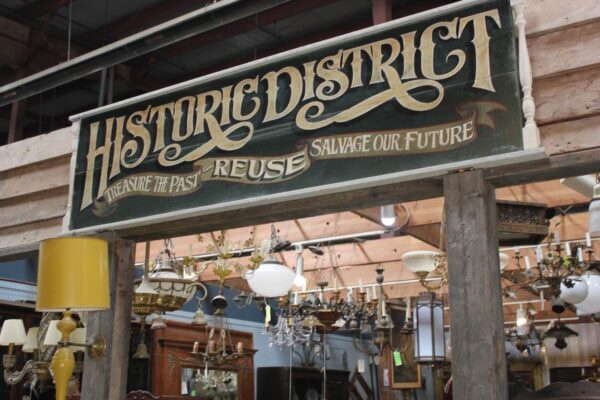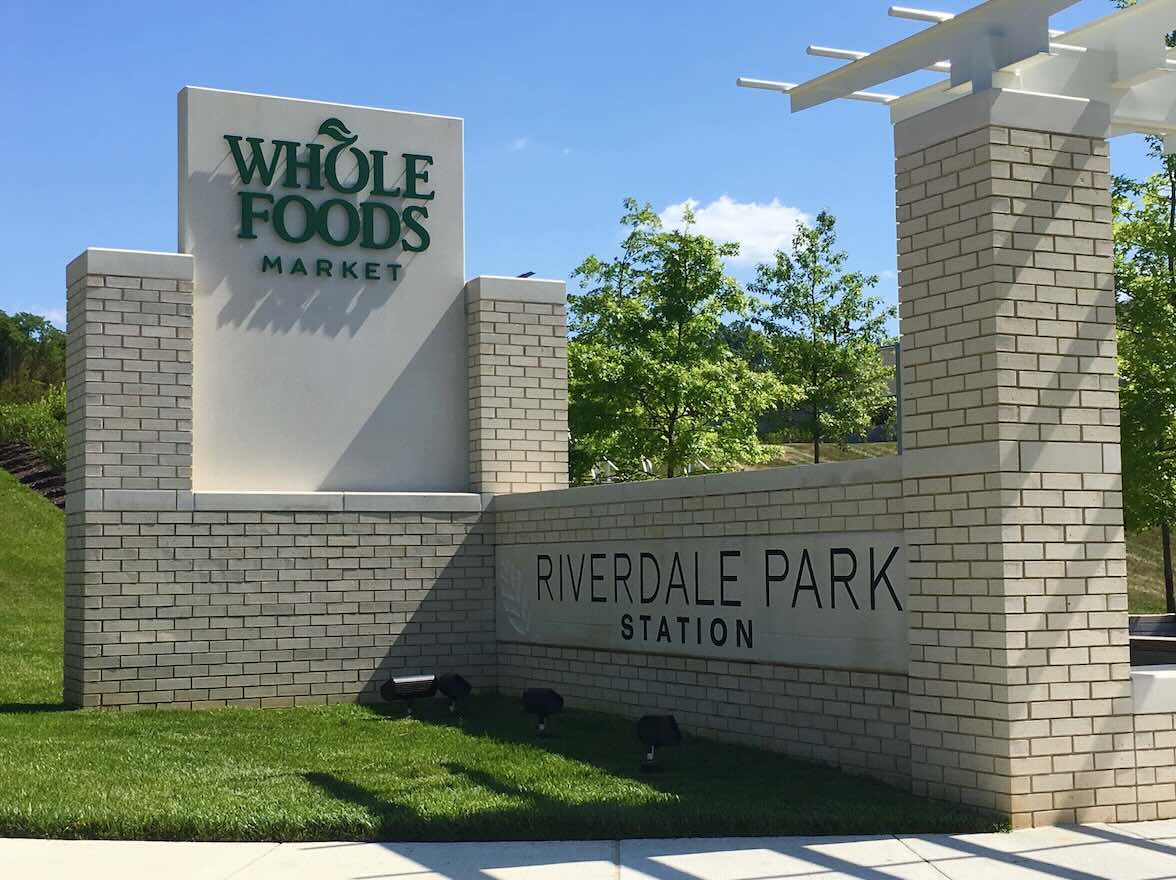At the entrance of the new Whole Foods is a circular brick structure that surrounds some interesting local history.
The brick itself is new. It serves as a protective veneer to an important archeological site: one of only three remaining 19th century ice houses in Prince George’s County.
Before the development of modern refrigeration, one technique to keep food from going bad was to build a large structure, mostly underground, and fill it with blocks of ice and snow in the winter.
Food was sometimes kept in ice houses. At other times, block of ice were brought into the home each week for use.
The Riverdale Park ice house dates to the 1860s, when the land was owned by the George Calvert family, who built the Riversdale Mansion, now a museum down the road. Local historians refer to it as the MacAlpine Ice House because it later became part of the MacAlpine Farm, which Calvert’s son, Charles, built on the site. There were several other ice houses at Riversdale, none of which survive.
An archeological survey of the site done before the development began found the remains of the brick lining of the icehouse:
Excavations around the ice house consisted of three exploratory trenches inside the structure to determine its size and its state of preservation. The upper portions of the brick-lined ice house were robbed and the opening was used as a trash dump through the 1940s and 1950s. The nature of the rubble deposit inside the ice house prevented further excavation and the base was not reached.
Because the regrading of the site would have exposed the ice house to further damage, the developers agreed to build the brick structure around it to preserve it, with an access hatch to allow future archeological surveys and interpretive signs that explain the site’s history.
The result is a win for all sides. The ice house was preserved without disrupting the overall plans for the development and it ended up providing an interesting landmark near the entrance as well.
It’s especially apt, since the ice house was used to store food, and many of the people passing by it are heading to a grocery store.






















Please check out The Prince George’s County student video on the history trolley car line: http://pghistory.org/main/student-video-project/
@InvasiveNotes